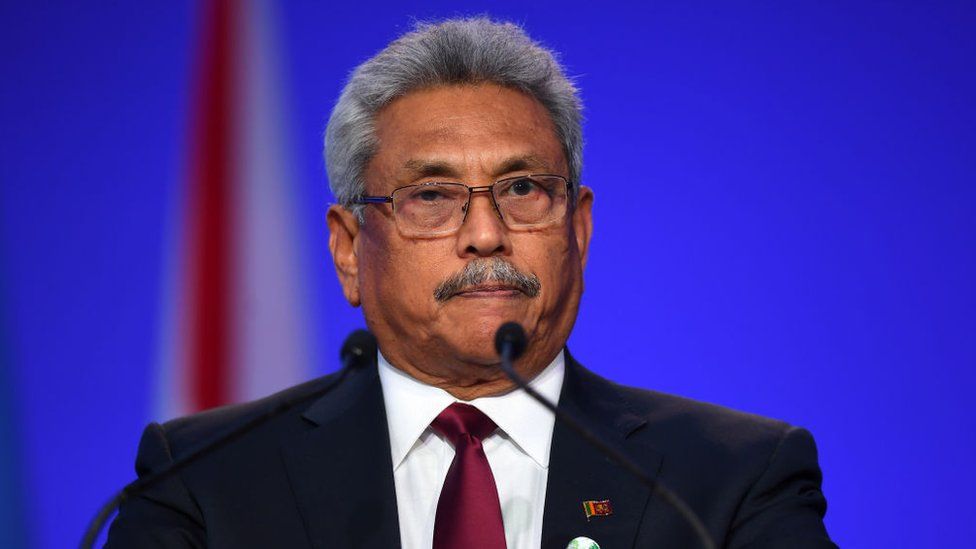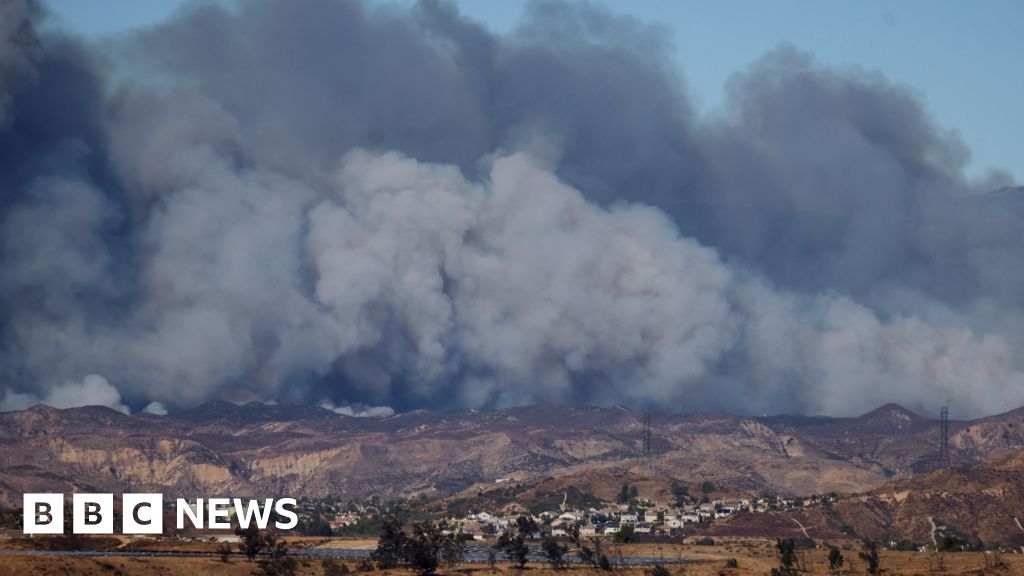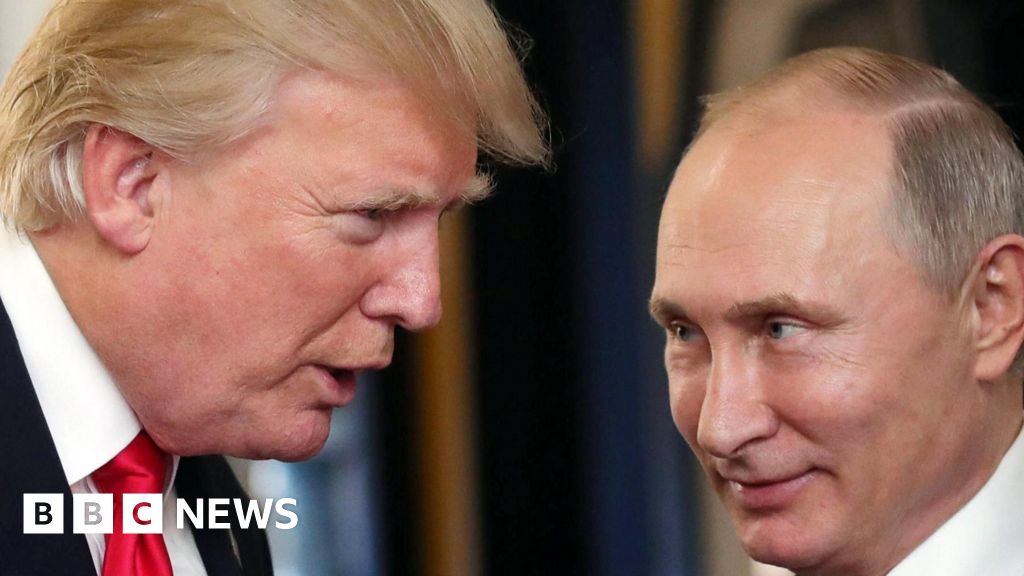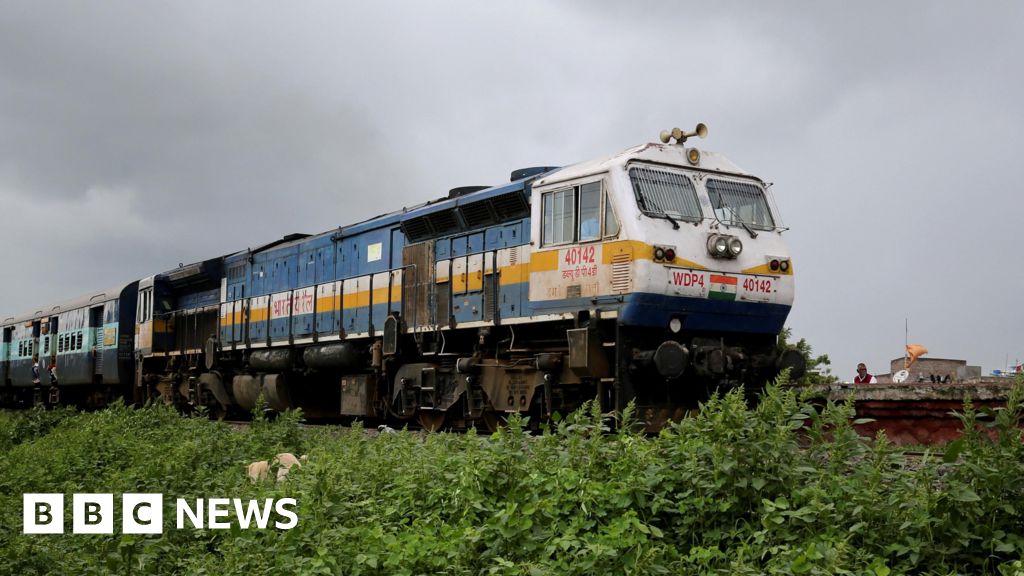ARTICLE AD BOX
 Image source, Getty Images
Image source, Getty Images
Mr Rajapaksa's location is currently undisclosed
Sri Lanka's beleaguered President Gotabaya Rajapaksa has confirmed his resignation, says the prime minister's office, after protesters stormed both leaders' official residences.
Demonstrators are still occupying the presidential palace and prime ministerial residence and have refused to leave until the leaders step down.
The parliament speaker said on Saturday the president would resign on 13 July.
But many protesters were strongly sceptical of the announcement.
On Monday, Prime Minister Ranil Wickremesinghe's office said in a statement it had been officially informed by Mr Rajapaksa that he would step down on Wednesday. However, there has been no direct word from Mr Rajapaksa.
Per Sri Lanka's constitution, his resignation can only formally be accepted when he resigns by letter to the parliament speaker - which has yet to happen.
Mr Wickremesinghe had earlier also said he would step down from his position.
Watch: Protesters storm Sri Lankan president's home in Colombo and set the PM's house on fire
Mr Rajapaksa's location is currently undisclosed but military sources have told the BBC he is on a navy vessel in Sri Lankan waters.
His brother, former Prime Minister Mahinda Rajapaksa, is on a naval base in the country, the sources say.
Thousands descended on the capital on Saturday demanding the president's resignation after months of protests.
Mr Rajapaksa has been blamed for the country's economic mismanagement, which has caused shortages of food, fuel and medicine for months.
Protesters inside the palaces have refused to budge until both leaders leave office.
"Our struggle is not over," student protest leader Lahiru Weerasekara said, quoted by AFP. "We won't give up this struggle until [President Rajapaksa] actually leaves," he said.
"The next couple of days are going to be extremely uncertain times as to see what transpires politically," political analyst and human rights lawyer Bhavani Fonseka told Reuters, adding that it would be interesting to see if the two leaders "actually resign".
Political leaders held further meetings to discuss a smooth transition of power on Sunday.
The speaker of Sri Lanka's parliament told the BBC World Service Newshour programme that a new cross-party coalition government must be formed within a week of the president officially stepping down.
Mahinda Yapa Abeywardena, a member of the president's governing party, also mostly blamed Covid-19 for the country's economic woes.
"The Covid pandemic has created havoc in the country economically so we had to spend all our money on vaccinations," he said.
Sri Lanka: The basics
- Sri Lanka is an island nation off southern India: It won independence from British rule in 1948. Three ethnic groups - Sinhalese, Tamil and Muslim - make up 99% of the country's 22 million population.
- One family of brothers has dominated for years: Mahinda Rajapaksa became a hero among the majority Sinhalese in 2009 when his government defeated Tamil separatist rebels after years of bitter and bloody civil war. His brother Gotabaya, who was defence secretary at the time, is the current president but says he is standing down.
- Now an economic crisis has led to fury on the streets: Soaring inflation has meant some foods, medication and fuel are in short supply, there are rolling blackouts and ordinary people have taken to the streets in anger with many blaming the Rajapaksa family and their government for the situation.
Image source, Getty Images
Image caption,Protesters made their way into the house, chanting slogans and waving the national flag on Saturday
The extraordinary events of Saturday appeared to be the culmination of months of mainly peaceful protests in Sri Lanka.
Huge crowds converged on the official residence of President Rajapaksa, chanting slogans and waving the national flag before breaking through the barricades and entering the property.
Footage online showed people roaming through the house and swimming in the president's pool, while others emptied out a chest of drawers, picked through the president's belongings and used his luxurious bathroom.
The contrast between the luxury of the palace and the months of hardship endured by the country's 22 million people was not lost on the protesters.
Mr Rajapaksa vacated his official residence on Friday as a safety precaution ahead of the planned protests, two defence ministry sources said, according to Reuters.
Although it is Mr Rajapaksa's official residence, he usually sleeps at a separate house nearby.

 2 years ago
26
2 years ago
26








 English (US) ·
English (US) ·